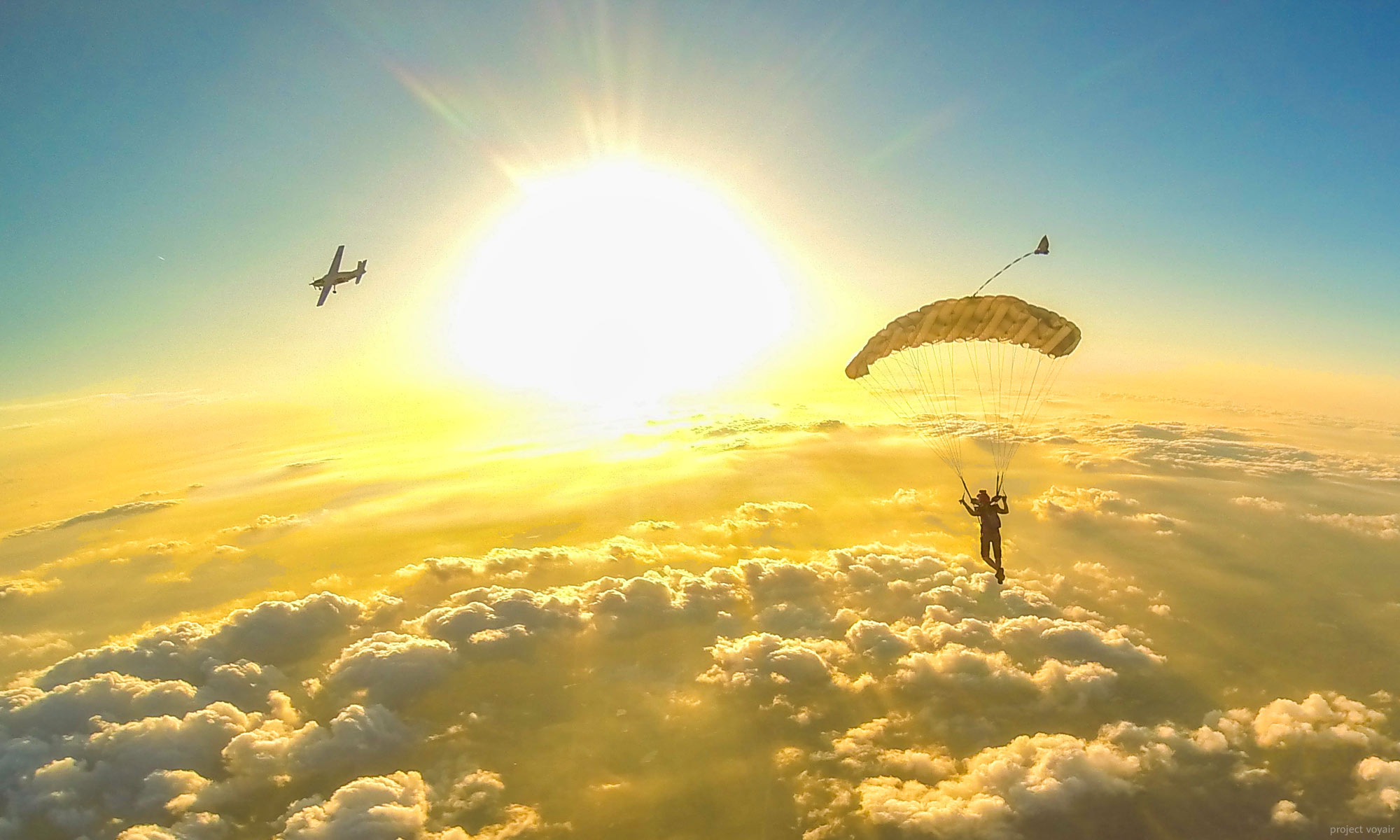Scenario: You’re under a good canopy at 2000 feet. You are downwind of the drop zone and aren’t sure you can make it to the landing area. Between you and the drop zone are trees, brush, power lines, and likely all manner of unpleasant critters. Behind you is a wide open field. What do you do?
a) Get on your rear risers or toggles, trim out your canopy for a flat glide, pull up your knees to reduce drag, and try to clear the obstacles.
b) Start looking for an alternate landing area.
c) Aim for the center of the biggest tree so you can grab onto it when you land there and not fall out of it.
d) Transfer your landing pattern to the open field behind you and aim for the center of it.
Remember back to your student training… at what altitude were you taught to select a suitable landing area? That’s right–2000 feet. Above 2500 feet you should have done a controllability check and begun evaluating potential landing areas (free of hazards) nearby.
So let’s look at the answers.
(a) Get on your rear risers or toggles, trim out your canopy for a flat glide, pull up your knees to reduce drag, and try to clear the obstacles.
Good answer–if you were well above 2000 feet, not AT 2000 feet. By 2000 feet, you should have already selected an easily reachable, safe landing area.
(b) Start looking for an alternate landing area.
By 2000 feet, you should have already done this so you can make a choice with sufficient altitude to achieve a good pattern starting point.
c) Aim for the center of the biggest tree so you can grab onto it when you land there.
This is only a good plan if you have failed to select an appropriate landing area in time to reach it. It’s an emergency technique, not a plan.
d) Transfer your landing pattern to the open field behind you and aim for the center of it.
DING DING DING! By 2000 feet, you should have decided on a safe area to land, whether that is on the drop zone or not. Don’t get fixated on the drop zone landing area; be realistic about whether you are certain you can make that area. If not, look all around you. Like they’re always telling us on commercial airline flights, the safest emergency plan may be behind you.
Select a suitable area, transfer your pattern to that area, and land just as if you would if you were “home.” On the way down, take a quick look around for the easiest way to walk to the drop zone or the nearest road for a pickup.
Safe landings and blue skies!

